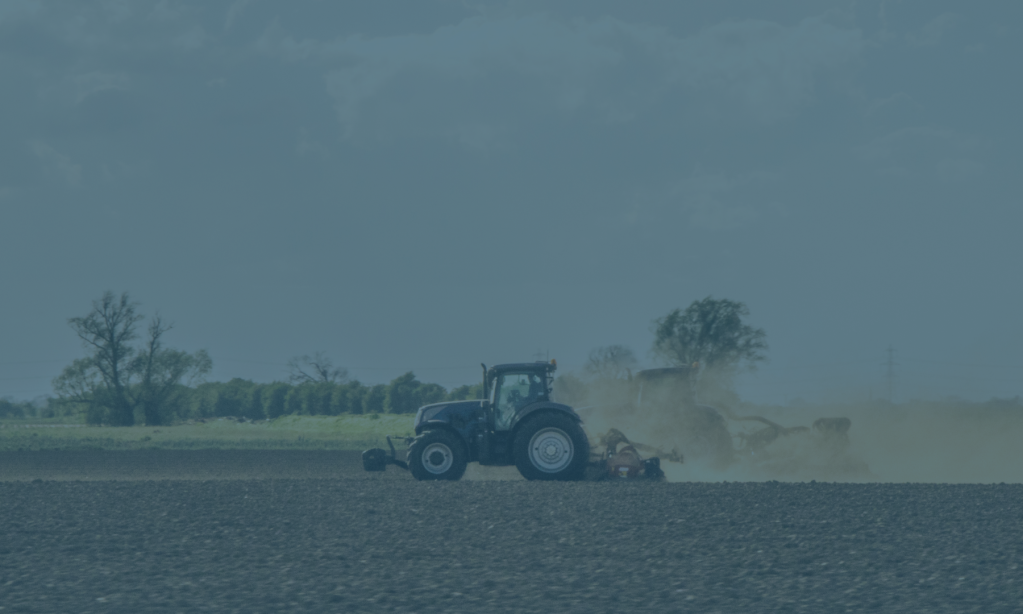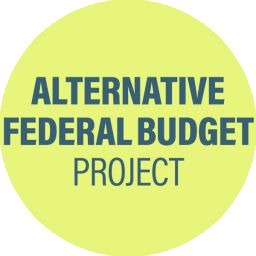Introduction
As Canada emerges from the global COVID-19 pandemic, the war in Ukraine continues, and climate change accelerates, the impacts of these disruptions continue to reverberate throughout our agriculture and food systems.
Multinational agribusinesses claimed hardship and raised prices for customers, but in fact made unprecedented profits during these crises, which they are now investing to further consolidate their market power. Costs of fuel and fertilizer skyrocketed in 2022, exacerbating the rising cost of farming, while gross incomes remained flat due to grain-trading corporations’ profits from commodities. The result is that farmers are only keeping a small portion of the value that their farms produce.
Canada’s agriculture policies continue to drive a net loss of farmers. As the average age of farmers rises, the total number of farmers drops. With insurmountable barriers to entry and poor prospects for making a dignified living as a farmer, young people are making other choices and Canada is not replenishing its farmer population. Despite travel difficulties during the pandemic, the number of agricultural migrant workers has risen, and the government is looking at automation rather than creating better working conditions to solve mounting labour force challenges.
Land prices continue to rise and are no longer related to the incomes that can be earned from farming. Total farm debt is now over $138 billion, and Bank of Canada attempts to fight inflation with interest rate hikes are adding even more costs. The financialization of land is accelerating, as investment companies and pension funds buy up land for speculation and maximize the rent they collect from farmers while holding the land.
Climate chaos is making harvests less certain, adding risks that exacerbate rising production costs and price stagnation. One of the few strategies remaining to individual farmers is increasing yields by applying more synthetic fertilizers, which are a major source of greenhouse gas emissions. Farmers are caught between a very sharp rock and an extremely hard place with few options to simultaneously address climate change and income needs.
Local food systems with shorter supply chains and low-input production systems using regenerative and agro-ecological methods are alternatives that address both income and environmental challenges. But these are often limited by lack of appropriate processing and distribution infrastructure along with a risk-management framework that excludes smaller, more diverse farms.
Overview
The AFB will strategically focus on addressing the interlocked emerging crises that threaten our agriculture and food system.
Current trends, if unchecked, will see land accumulated by wealthy (and in some provinces foreign-owned) investment corporations and farmed by tenant farmers or migrant workers. Rural communities will dwindle and disappear while large urban centres struggle to provide housing. Canada’s agricultural production will focus on a few high volume, low-priced export commodities. Our food supply will depend on imports of processed food and fresh produce from low-wage, more southern countries that will increasingly face climate stress and water shortages. As governments try to shrink themselves by answering demands for lower corporate taxes, their ability to provide public services and regulate in the public interest falters to a point where many lose trust in our institutions.
There is an urgent need to reset agricultural policy goals from trade and export expansion alone, and develop instead a multi-functional framework focused on the following:
- Increasing inter-generational equity.
- Improving rural quality of life with particular attention to BIPOC, youth, and women.
- Increasing our capacity to grow, process, and distribute food in Canada
- Maintaining the productive capacity of our farmland by protecting it from urban sprawl, enhancing biodiversity, and accelerating climate mitigation and adaptation measures.
The government has begun to address some of these matters through its Sustainable Agriculture Strategy but a greater vision and a stronger commitment to non-market mechanisms is needed to bring about change. The severity of our problems requires governments to actively engage and work on these problems directly. This means not relying on a suite of subsidies and incentives to induce the private sector to voluntarily change the course it has been on for decades.
Actions
The AFB will invest in agricultural labour.
The AFB will create a framework for a dedicated immigration stream for agricultural workers. Until that is established, it will provide open work permits to all Temporary Foreign Workers. This will allow them to change employers if necessary and grant them all the rights and privileges that Canadian workers have under provincial and territorial labour laws. These measures will result in better wages and working conditions, and more secure and stable employment for farm workers—whether they are Temporary Foreign Workers or residents. This will also improve equity in Canadian society, as many farm workers are BIPOC, women, and/or youth who face systemic discrimination.
To further address agricultural labour shortages, the AFB will establish a suite of off-season employment programs and ensure both resident and migrant farm workers are able to benefit from Employment Insurance (see the EI chapter) to provide economic stability during the non-growing season. With year-round income security, more workers will be able to choose agriculture as a long-term employment option.
Investment in improving agricultural labour conditions is also an important strategy for climate adaptation and mitigation. As Canada reduces dependence on fossil fuel–based transportation and machinery, and immigration to Canada becomes more attractive as climate impacts make parts of the world less inhabitable, Canada will need to expand its capacity to provide food security through good jobs in low-emissions, labour-intensive sectors of agriculture.
The AFB will establish a Foodshed Lands Trust. A foodshed is an area that produces food that flows towards a centre, analogous to how watersheds feed rivers and lakes. The Foodshed Lands Trust will address two crises simultaneously: the loss of prime farmland to urban sprawl and the lack of access to land for disadvantaged potential farmers.
The trust will acquire suitable publicly held lands and purchase lands from willing sellers in peri-urban areas to provide long-term leases at affordable rates to individual farmers and communities of farmers who will use low-emissions production methods that protect water quality and biodiversity to produce food for sale in the nearby city. The trust will encourage the development of new local food cultures based on what grows well in the area while supporting communities to grow the foods they need to maintain their food traditions.
Foodshed Lands will be rolled out across Canada, with acreage targets for farmland transfers in each province. These will focus on areas of severe vulnerability to farmland loss due to sprawl and with high barriers to land acquisition by new, young, and BIPOC Canadian farmers. The trust might begin by acquiring the 18,600 acres near Pickering currently held by the federal government (and no longer needed for an airport), and the 4,700-acre Duffins Rouge Agricultural Preserve that is adjacent to Parc Rouge National Park.
The AFB will capitalize the Foodshed Lands Trust with $3 billion to purchase lands with a zero interest loan. The trust will amortize its capitalization through aggregate lease payments from farmers over 30 years.
The AFB will remove corporate lobbyists from the policy-making process. Many of the economic problems in Canada’s agriculture sector are not due to lack of resources but to policies that strip value from farmers and communities by moving money out of the country through export-focused policies and trade agreements that privilege multinational corporations.
Based on the 2016 Barton report, former Finance Minister Bill Morneau established a set of private-sector policy bodies, called Economic Strategy Tables, led by corporate CEOs to advise the federal government. Their recommendations, invariably calling for deregulation and other self-interested policies, have exacerbated the power imbalance between farmers and multinational corporations. The result is Canada’s greater reliance on selling higher volumes of lower-priced commodities while increasing its dependence on imported high-value processed and fresh foods for consumption. This weakens food security and undermines domestic production and marketing capacity. It reduces the return per tonne from crops that farmers produce for export. It also offloads costs and risks onto the public, farmers, and future generations through accelerated deregulation.
The AFB will dismantle the Economic Strategy Tables and establish public interest standards and indicators for regulatory bodies responsible for food and agriculture. It will increase annual core funding for regulatory bodies by 25 per cent to ensure they have long-term assured capacity for effective review and enforcement.
The AFB will establish conflict-of-interest prevention training programs for regulatory agency personnel to inoculate them from lobbying efforts by the corporate sector. The AFB will also establish hiring policies and contract language to ensure personnel do not have—and do not develop—financial ties to the regulated parties.
The AFB recognizes that regulators face increasingly complex challenges from the large numbers of products that require oversight, advances in understanding the complexities of risks, and the synergistic effects of climate change. Our regulators need more capacity to keep up their responsibilities for evaluation, monitoring, and enforcement. The AFB will boost the inspection portions of regulatory bodies of the Canadian Grain Commission, the Canadian Food Inspection Agency and the Pest Management Regulatory Agency by 25 per cent.
The AFB recognizes that this front-end investment in public interest regulation will create long-term value for Canadians’ health, ecosystems, and a livable future environment. Hand in hand with removing excessive influence of regulated parties, the AFB will reverse the trend to de fund regulators, rebuilding laboratory and personnel capacity needed to safeguard the health and environment of Canadians, including farmers.
The AFB will increase local and regional infrastructure capacity. Rather than encouraging more distance between consumer and producer through online purchasing, the entry of multinational corporations, and the excessive concentration of Canada’s retail grocery sector, the AFB will take measures to increase the market share of small- and medium retailers selling local, regional, and domestic agricultural products.
Lack of processing, storage, transportation, and distribution creates bottlenecks that prevent local food systems from reaching their potential. The AFB will provide $210 million per year to fund multi-year projects that help communities strategically develop their capacity in a coordinated and integrated fashion.
This infrastructure development program will support feasibility, technical and business planning studies, and capital funding and training to support building and operating needed infrastructure. Networks and associations of small and medium enterprises, including private businesses, co-operatives, social enterprises, and community organizations, will be eligible for this funding.
The AFB recognizes that it will take time for local and regional food system capacity to develop and become self-sustaining, and that market conditions will vary across the country. The infrastructure development program will be strategic, aiming to ensure that local and regional farmers and their communities have increased stability, leading to more resilience in the food supply.
Once established, these systems will provide local livelihoods that will support vibrant communities of different sizes in many locations.
The AFB will establish a climate change-focused agriculture extension institution. Reducing agricultural emissions is one of our most complex tasks in reducing greenhouse gas emissions overall. Agriculture creates carbon dioxide, nitrous oxide, and methane emissions from animal digestion, fertilizer use, and manure handling. Machinery, heating, and electricity also burn fossil fuels and therefore create emissions.
Canada has more than 200,000 farms of different types and sizes, located in numerous bioregions across the country with a wide range of conditions; reducing emissions and adapting to climate impacts is becoming harder as global CO2 levels increase. While farmers do their best, these problems cannot be solved by individual action.
Canada needs a dedicated public institution to lead and coordinate emissions reduction, resilience building, climate adaptation, data collection, research, education, and outreach.
The AFB will therefore establish a national extension institution modelled after the former Prairie Farm Rehabilitation Administration to connect farmers to expertise in the countryside, provide leadership, and develop knowledge to support farmers in putting low-emissions agriculture into practice.
The AFB will reallocate $400 million ($5 per acre) annually, shifting funds from export-promotion subsidies currently given to high-input industry associations. Ongoing support will be budgeted based on the need for much greater government capacity to provide services to farmers directly, recognizing that future risks and costs can be reduced (compared to business-as-usual projections) through effective climate mitigation and adaptation measures.







